5 of the Largest Feline Species
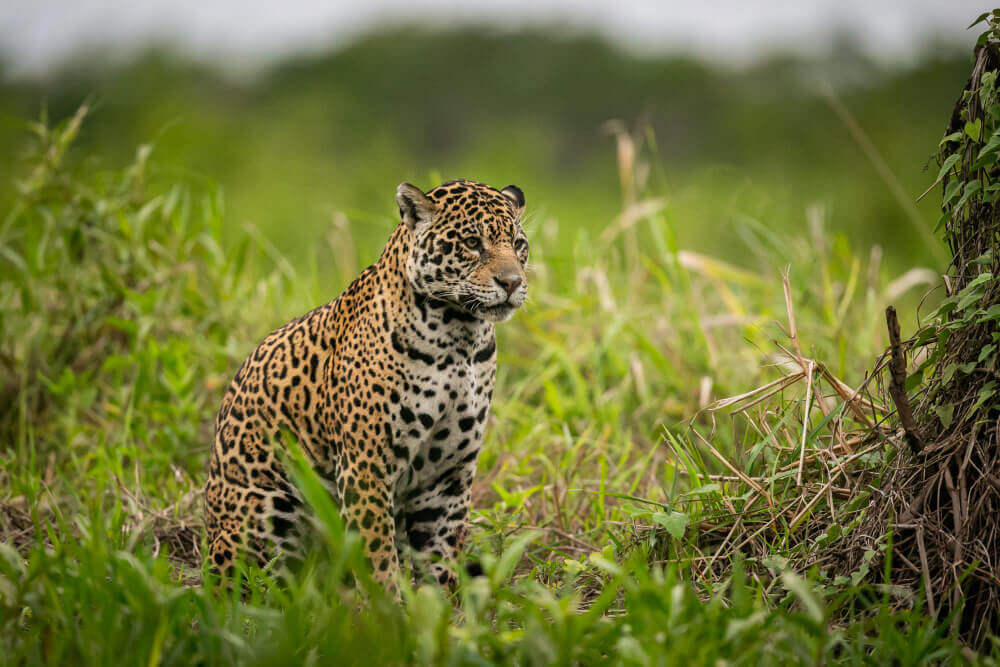
Domestic cats are the undisputed stars of the internet, but let’s not forget their larger relatives. The large feline species still have a lot in common with the cats we have at home. Let’s have a closer look at them.
The family of the largest felines
Even if they live all over the planet, nearly all large feline species belong to the same family. Apart from their large size, they have other things in common, such as their carnivorous habits. Additionally, they’re the only cats capable of roaring and they’re active hunters.
However, their behavior varies. Some of these large felines live and hunt in groups, while others are solitary animals. Some have adapted to dry areas and others live in forests or jungles. Each one has evolved according to the needs of its environment.
It’s been discovered that they also have things in common with other cats, including the domestic ones: they can purr when they’re happy or feel comfortable, and they also have a weakness for cardboard boxes!
5th: Leopard
Out of all the largest feline species, the leopard (in the photo at the beginning of this article) is in fifth position. Normally, the leopard and the black panther are seen as two different species, but, in reality, it’s the same animal with a variety of fur colors. We’re talking here, then, about the animal with rosettes of brown color and also the one that’s completely black.
The leopard has a great ability to adapt, and can survive in many different habitats. Currently, it’s found mainly in southern Africa, but it’s been seen almost all over that continent –except in the desert– and in southern Asia too.
As for its height, it measures between 60 and 110 centimeters (24 to 43 in) up to the withers. It’s almost 2 meters (7 ft) long, not counting its tail. Adult specimens weigh between 30 and 90 kilograms (66 to 198 lb). This great difference in weight is a consequence of the striking sexual dimorphism of this species.
4th: Jaguar
The jaguar used to live in almost all of South and Central America, but, as its population is declining, it can only be found in the northern half of South America now. Its habitats are very fragmented due to human activity, even if many specimens live safely in the natural reserves.
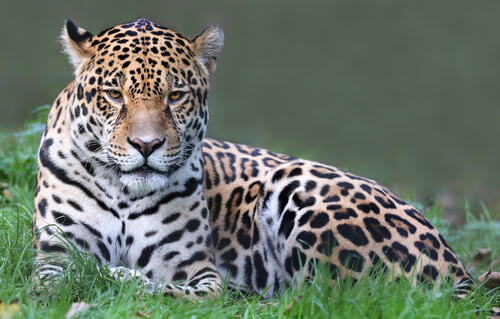
This animal also has great differences in size and weight as an adult. Normally, its weight varies between 60 and 90 kilograms (132 to 198 lb), however, specimens of only 35 kilograms (77 lb) have been found. Its height up to the withers is around 70 centimeters (28 in), and, without counting the tail, it measures between one and a half to two meters (5 to 7 ft) in length.
3rd: Lion
In prehistoric times, the lion was the most widespread land mammal. However, today its habitat is limited to sub-Saharan Africa and small regions of South Asia. Sadly, it’s disappeared from Europe, Eurasia, and even North America.
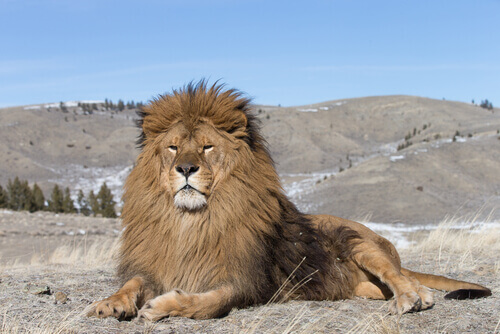
Lions are one of the largest feline species, weighing between 160 and 260 kilograms (353 to 573 lb). They measure between 180 and 270 centimeters (6 to 9 ft) in length, not counting their tails, which makes them much more robust than jaguars. Moreover, the tail can measure more than 1 meter (3 ft) on its own.
2nd: Saber-toothed cat: one of the largest feline species, now extinct
This big cat is now extinct, but it was once one of the largest felines on Earth. In fact, it’s almost the biggest cat in history. The saber-toothed cat, also known as Smilodon, is actually a family formed by three big cats, with a few differences between them.
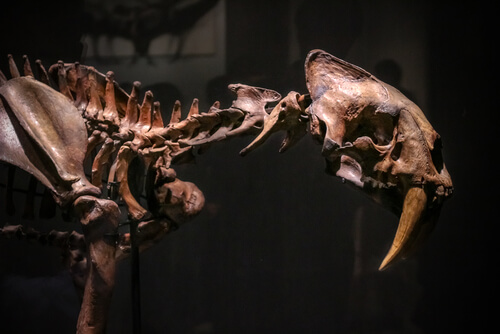
Depending on the species it belonged to, an adult Smilodon could weigh up to 300 kilograms (660 lb). The largest variety, Smilodon populator, measured up to one and a half meters (5 ft) up to the withers.
In time, these species of big cats came to live together with human beings. The most accepted theory about their extinction asserts that humans hunted the same prey as the saber-toothed cat, and, thus, the lack of food eventually made them extinct.
1st: Tiger: the largest feline species in existence
Of all the largest feline species that exist, or ever existed, the tiger is the king. This cat, characterized by its stripes, also has different sizes depending on where it lives.
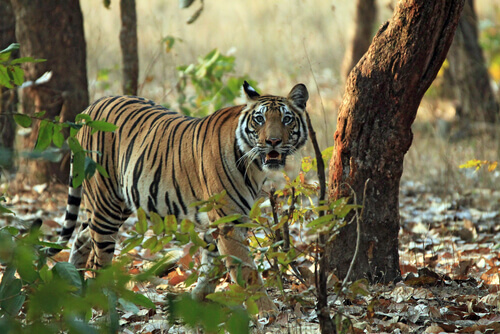
Thus, the largest specimens reach up to 250 kilograms (550 lb) in weight and more than 3 meters (10 ft) in length if we count the tail. Up to the withers, they have a height of 122 centimeters (4 ft).
Even if the latest reports are encouraging, the tiger is still in danger of extinction. Two centuries ago, tigers inhabited all of Southeast Asia, but today they only survive in small fragmented territories in South Asia.
Almost all of the large feline species are closely related. The only exception is the saber-toothed cat, which, as we said, became extinct thousands of years ago. These animals have many things in common, and, by looking at their traits, save for their colors, you could guess that they’re related. Despite this, they live scattered all over the planet.
